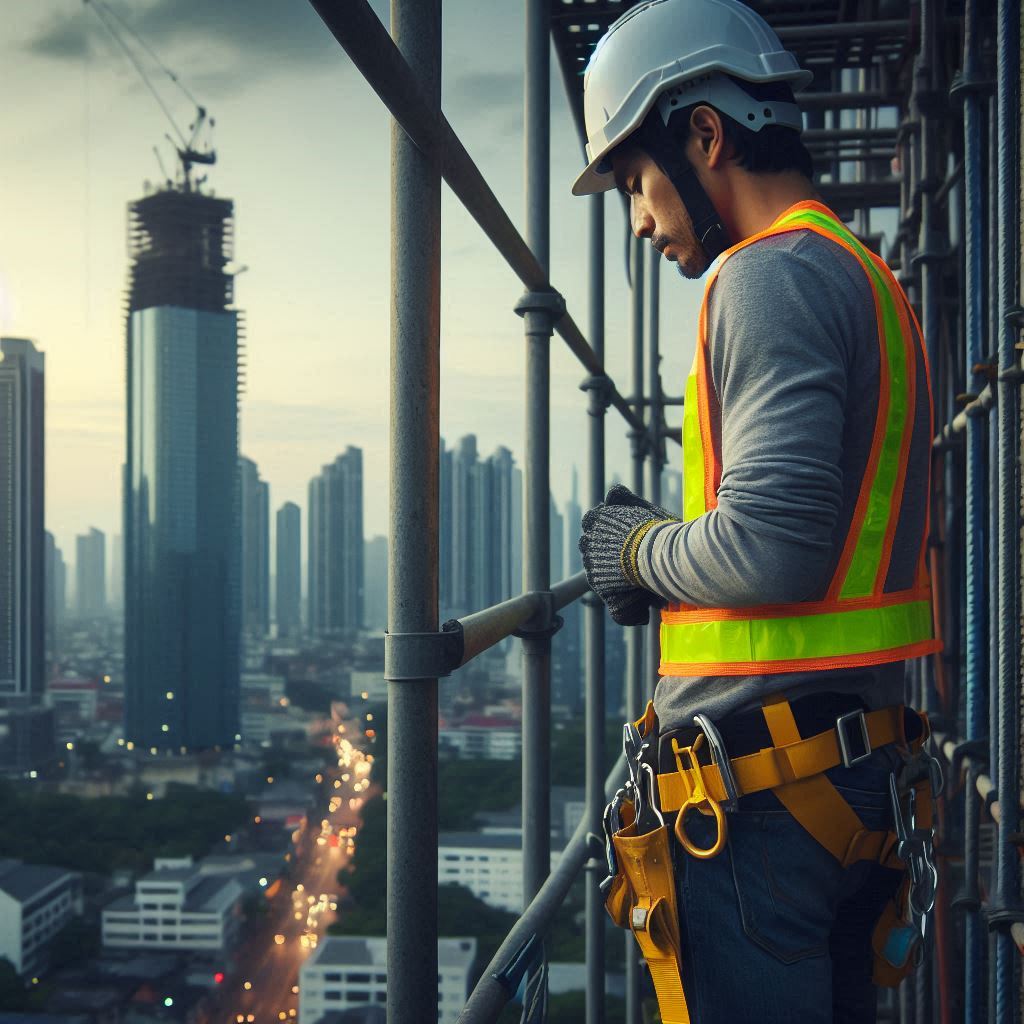Working at height is one of the most hazardous tasks across industries like construction, oil & gas, telecom, and manufacturing. Despite stringent safety measures, accidents such as falls, suspension trauma, or equipment failures can still occur. An effective Work at Height Emergency Response Plan can mean the difference between life and death in such situations.
In this blog, we’ll break down the key aspects of an emergency response plan for work at height incidents and how organizations can enhance their preparedness.

Why a Work at Height Emergency Response Plan Matters
A fall from height doesn’t just pose an injury risk—it can lead to fatal consequences if not addressed immediately. Factors such as:
- Delayed rescue (leading to suspension trauma)
- Lack of proper communication
- Untrained emergency response teams
- Failure to use appropriate rescue equipment
can all escalate an incident from bad to worse.
A well-structured Work at Height Emergency Response Plan ensures a swift, coordinated, and effective response in case of an accident.
Key Components of an Effective Work at Height Emergency Response Plan
1. Hazard Identification and Risk Assessment
Before setting up an emergency response plan, it’s crucial to identify all potential hazards at the worksite. This includes:
- Areas prone to fall hazards
- Suspension trauma risks due to prolonged hanging in a harness
- Obstructions that may hinder a rescue
- Weather conditions that may affect rescue operations
A thorough risk assessment allows safety teams to develop scenario-specific response strategies.
2. Clear Emergency Procedures
A Work at Height Emergency Response Plan should cover:
- Who to notify in case of an incident (site supervisor, safety officer, emergency team)
- How to communicate the emergency (radios, alarms, hand signals)
- Step-by-step rescue procedures based on different scenarios (fall arrest, unconscious worker, confined space rescue, etc.)
Clarity is key—workers must know their roles and responsibilities in an emergency.
3. Proper Rescue Equipment & Accessibility
Rescue operations can fail due to a lack of suitable equipment or its improper use. Essential rescue gear includes:
- Fall arrest & self-rescue devices (descender systems, retractable lifelines)
- Rope access rescue kits (pulleys, harnesses, belay devices)
- Ladders & aerial lifts for high-reach rescues
- First-aid kits and immobilization gear for injured workers
Tip: Equipment should be easily accessible and regularly inspected to ensure readiness.
4. Suspension Trauma Prevention & First Aid
If a worker falls and remains suspended in a harness, suspension trauma can set in within minutes. This can lead to fainting, blood circulation issues, and even death.
Immediate actions:
- Encourage the worker to move their legs to maintain circulation.
- Use a foot loop or relief strap to reduce pressure.
- If unconscious, rescue them within 10-15 minutes and place them in a semi-reclined position to avoid reflow syndrome (where blood rushes back too quickly to the heart).
5. Well-Defined Communication Plan
During an emergency, quick and effective communication is critical. A well-defined communication protocol should include:
- Dedicated emergency channels (walkie-talkies, alarm systems)
- Emergency codes to distinguish different incidents
- Pre-assigned rescue teams who know their tasks beforehand
Every second counts—having pre-planned communication protocols ensures a coordinated response.
6. Regular Training & Emergency Drills
A Work at Height Emergency Response Plan is only effective if workers and emergency teams practice it regularly. Conduct:
- Mock rescue drills (covering different fall scenarios)
- Suspension trauma first-aid training
- Evacuation procedures & equipment handling sessions
Frequent training builds muscle memory, ensuring a calm and efficient response during real emergencies.
Advanced Technologies in Work at Height Emergency Response
With technological advancements, work-at-height emergency response has improved significantly. Some innovative solutions include:
- IoT-enabled fall detection systems – Wearable sensors that automatically send distress signals after a fall.
- Drone-assisted rescue – Drones equipped with cameras help assess situations in hard-to-reach locations.
- Augmented Reality (AR) training – Virtual simulations for workers to experience real-time emergency scenarios.
Adopting these technologies can enhance response times and worker safety.
Conclusion: Proactive Planning for Work at Height Emergency Response Plan
No matter how robust your fall protection measures are, incidents can still occur. The true test of safety preparedness lies in how effectively you respond to an emergency. A well-structured Work at Height Emergency Response Plan ensures that:
✔ Rescues happen swiftly and efficiently
✔ Lives are saved with proper first aid
✔ Workers feel confident and secure knowing a plan is in place
Don’t wait for an accident to happen—train, plan, and stay prepared!


